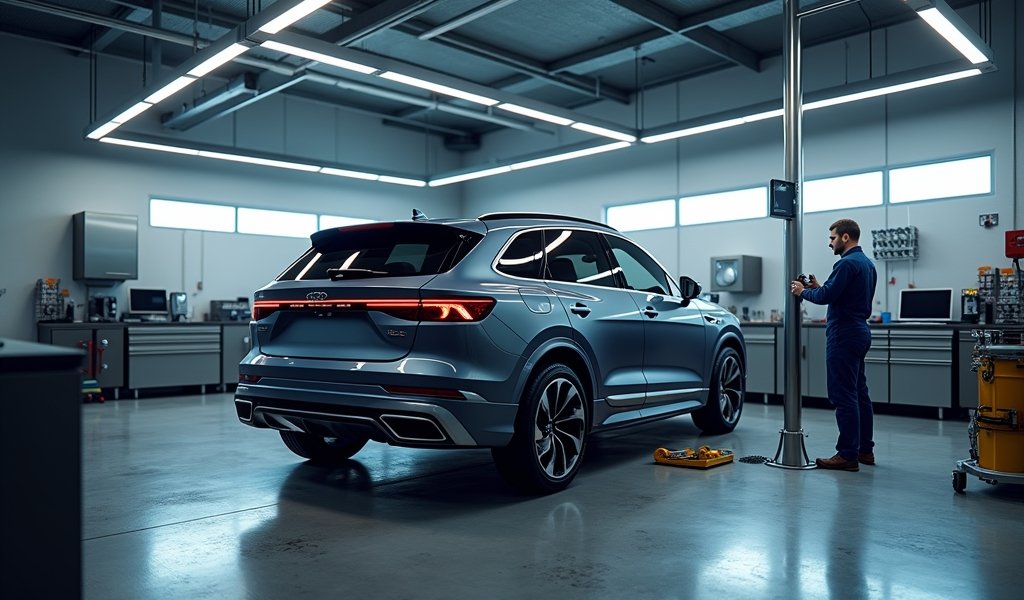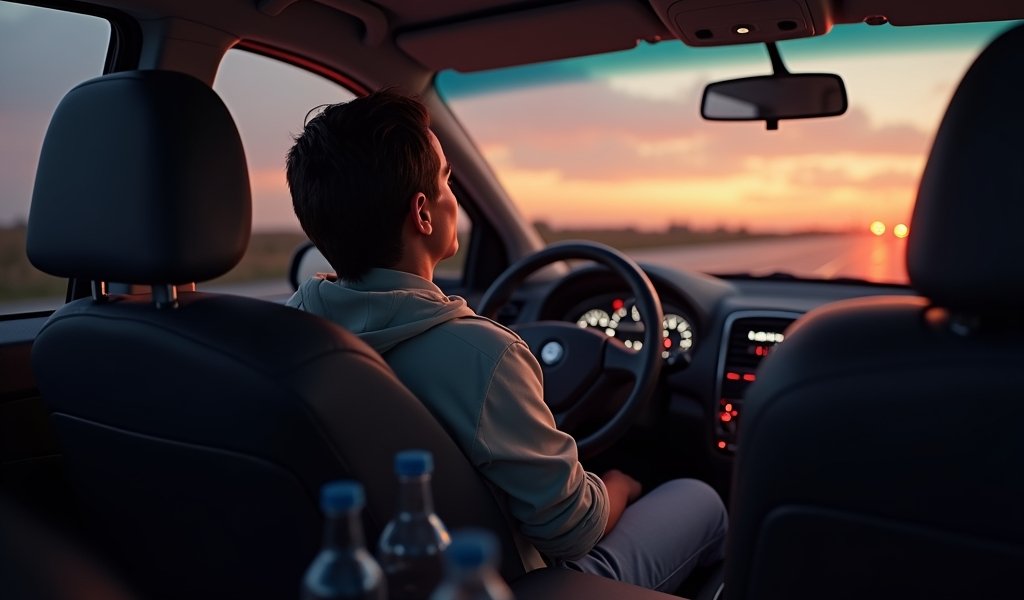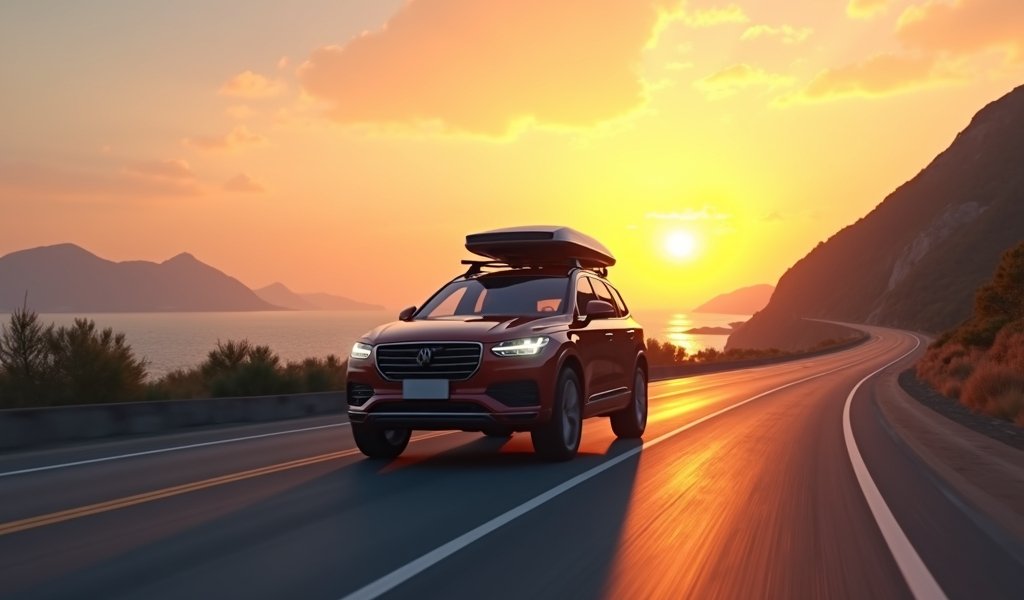Overview
The article provides seven essential tips for selecting the ideal road trip vehicle, highlighting the importance of fuel efficiency, comfort, cargo capacity, reliability, entertainment options, safety features, and driving dynamics. It offers specific vehicle recommendations for different travel needs while emphasizing that preventive maintenance before departure is crucial for ensuring a smooth journey.
Table of Contents
- Choosing the Perfect Road Trip Car
- Tip 1: Prioritize Fuel Efficiency
- Tip 2: Consider Comfort and Space
- Tip 3: Assess Cargo Capacity
- Tip 4: Evaluate Reliability and Maintenance
- Tip 5: Look for Entertainment and Connectivity Options
- Tip 6: Consider Safety Features
- Tip 7: Don’t Forget Driving Dynamics
- Conclusion: Finding Your Perfect Road Trip Companion
- Frequently Asked Questions
Choosing the Perfect Road Trip Car
There’s something truly magical about embarking on a long road trip. The open highway stretching before you, favorite tunes filling the cabin, and the promise of adventure on the horizon. But as a mechanic with 20 years of experience, I can tell you that your choice of vehicle can transform your journey from a memorable adventure to a forgettable nightmare.
Selecting the best cars for long road trips isn’t merely about transportation—it’s about enhancing your entire travel experience. The right vehicle becomes more than a machine; it becomes your trusted companion through mountains, deserts, coastlines, and everything in between.
After helping countless customers prepare their vehicles for cross-country journeys, I’ve compiled these seven professional tips to guide you toward finding the perfect road trip partner. These insights come not just from technical knowledge, but from hearing the real-world experiences of drivers who’ve returned from thousands of miles on the road.
Tip 1: Prioritize Fuel Efficiency
Nothing eats into your vacation budget faster than constant fuel stops. From a purely mechanical perspective, vehicles designed with efficiency in mind will not only save you money but also reduce your environmental footprint and extend your range between stops.
Hybrid vehicles consistently deliver impressive efficiency for highway journeys. The Toyota Prius averages over 50 mpg combined, while the Honda Accord Hybrid delivers about 48 mpg. These aren’t just numbers—they translate directly to your wallet. On a 2,000-mile road trip, the difference between 25 mpg and 40 mpg vehicles amounts to roughly $100 in fuel savings (at $3.50/gallon).
If hybrids aren’t your style, several conventional options still deliver excellent economy. The Honda Civic can achieve up to 42 mpg highway, while the Mazda3 delivers a respectable 36 mpg highway while offering more engaging driving dynamics.
Consider your route carefully when evaluating efficiency. A vehicle’s highway mpg matters more than its city rating for road trips, and mountainous terrain will reduce real-world efficiency compared to flat interstate driving. In my garage, I’ve seen EPA estimates fall short by 3-5 mpg in mountainous regions, so build in some buffer in your calculations.
Tip 2: Consider Comfort and Space

When you’re spending 8+ hours daily behind the wheel, vehicle comfort isn’t a luxury—it’s essential. I’ve seen customers return from long trips with back pain, fatigue, and irritability that could have been avoided with a more suitable vehicle.
Focus on these critical comfort elements:
- Seat support and adjustability (particularly lumbar support)
- Sufficient headroom and legroom for all passengers
- Cabin noise insulation at highway speeds
- Effective climate control throughout the cabin
- Suspension that balances road feel with impact absorption
Mid-size sedans like the Toyota Camry and Honda Accord excel in providing comfort without sacrificing efficiency. For additional space, crossovers such as the Honda CR-V or Subaru Outback deliver excellent comfort while maintaining reasonable fuel economy.
Here’s a mechanic’s tip many salespeople won’t tell you: before committing to a vehicle, take it for at least an hour-long test drive on the highway. Short dealership loops rarely reveal the pressure points that emerge during extended driving. Pay special attention to seat comfort, wind noise, and how your body feels after the longer drive.
Tip 3: Assess Cargo Capacity
Nothing creates tension faster on a road trip than playing tetris with luggage or leaving essential items behind. In my years servicing road trip vehicles, I’ve seen families return with luggage strapped to roofs or crammed between passengers—neither safe nor comfortable.
Crossovers and wagons naturally excel in this category. The Subaru Outback offers 32.5 cubic feet behind the rear seats, while the Volkswagen Golf Alltrack provides surprising capacity in a compact footprint. For families who need more space, midsize SUVs like the Hyundai Santa Fe or Kia Sorento offer generous cargo room without the fuel penalty of larger models.
Don’t dismiss sedans too quickly. Models like the Volkswagen Passat and Honda Accord feature spacious, well-designed trunks that can accommodate luggage for four travelers without issue. The key advantage of crossovers isn’t necessarily volume—it’s accessibility and flexibility.
As a mechanic who’s packed countless vacation vehicles, I recommend:
- Choosing soft-sided luggage for irregular cargo spaces
- Utilizing packing cubes to maximize organization
- Avoiding roof carriers when possible (they significantly impact fuel economy)
- Testing your full luggage setup before departure day
Remember that your vehicle’s payload capacity includes passengers AND cargo. Exceeding this limit affects handling, braking distance, and puts excess strain on suspension components—especially problematic on mountain routes.
Tip 4: Evaluate Reliability and Maintenance
There’s nothing worse than spending part of your vacation at a repair shop in an unfamiliar town. After decades diagnosing stranded travelers’ vehicles, I can tell you that reliability should be your non-negotiable priority.
Brands with consistently strong reliability ratings include Toyota, Honda, Mazda, and Subaru. Within these brands, models worth considering include:
- Toyota Camry and RAV4 (legendary durability)
- Honda Accord and CR-V (excellent powertrain reliability)
- Mazda CX-5 (fewer reported issues than competitors)
- Subaru Outback (particularly with the non-turbocharged engine)
Whatever vehicle you choose, complete this pre-trip inspection checklist about two weeks before departure:
- Tire condition, tread depth, and proper inflation (including spare)
- All fluid levels and condition (oil, coolant, transmission, brake)
- Brake pad thickness and rotor condition
- Battery health test (terminals should be clean and tight)
- Air filters (both engine and cabin)
- Belts and hoses (checking for cracks or leaks)
- Suspension components and wheel bearings
This two-week buffer allows time to address any issues without causing last-minute stress. I’ve seen too many vacations derailed by preventable problems discovered the night before departure. An hour in the shop before your trip can save days of headaches on the road.
Tip 5: Look for Entertainment and Connectivity Options
Modern vehicles offer impressive technology that significantly enhances the road trip experience. As someone who’s retrofitted countless older vehicles with modern tech, I can attest that factory-installed systems typically provide the most reliable and integrated experience.
When evaluating potential road trip cars, prioritize:
- Intuitive infotainment systems with responsive touchscreens
- Apple CarPlay and Android Auto compatibility
- Multiple USB charging ports throughout the cabin
- Reliable Bluetooth connectivity with voice command capabilities
- Built-in navigation as backup for areas with poor cell service
Vehicles like the Kia Telluride, Hyundai Palisade, and recent Toyota and Honda models offer excellent connectivity options. Some even include WiFi hotspot capabilities—invaluable when traveling through areas with spotty cell coverage but functional WiFi.
For family journeys with children, rear-seat entertainment becomes invaluable. The Chrysler Pacifica, Honda Odyssey, and some higher-trim SUVs offer built-in screens or tablet mounts. As a mechanic and parent, I recommend vehicles with dedicated rear USB ports and tablet holders over integrated screens—they’re more flexible, easier to update, and less expensive to repair.
Tip 6: Consider Safety Features

Highway driving presents unique risks, and modern safety features can both protect you and reduce driver fatigue. After seeing the aftermath of highway incidents, I consider advanced safety systems non-negotiable for serious road trippers.
Advanced driver assistance systems worth prioritizing include:
- Adaptive cruise control (maintains following distance automatically)
- Lane-keeping assist (prevents drifting during monotonous stretches)
- Blind-spot monitoring (crucial with fully loaded vehicles)
- Automatic emergency braking with pedestrian detection
- 360-degree camera systems for navigating tight spots
Vehicles offering comprehensive safety packages include Subaru models with EyeSight, Toyota vehicles with Safety Sense, and Honda models with Honda Sensing. These systems come standard on many trim levels, making safety technology more accessible than ever.
From a mechanic’s perspective, these systems do require occasional calibration and maintenance, particularly after windshield replacement or collision repair. However, their benefits far outweigh these minor maintenance considerations. According to the Insurance Institute for Highway Safety, vehicles with automatic emergency braking reduce rear-end crashes by approximately 50%.
Tip 7: Don’t Forget Driving Dynamics
A vehicle might check all the practical boxes yet still feel exhausting after several hours. The way a car handles, steers, and rides profoundly impacts driver fatigue and enjoyment. As someone who’s adjusted countless suspensions and steering systems, I can tell you that driving dynamics matter enormously on long journeys.
The ideal road trip vehicle balances comfort with control:
- Suspension soft enough to absorb impacts but controlled enough to prevent wallowing
- Steering with appropriate weight and feedback
- Powertrain responsive enough for confident passing but relaxed at cruising speeds
- Brake pedal with progressive feel and adequate power
Consider your route when evaluating driving dynamics. Mountain passes and coastal roads favor vehicles with more engaging handling like the Mazda CX-5 or Volkswagen Golf. For primarily interstate driving, the smoother ride of a Toyota Camry or Kia K5 might better serve your needs.
Some vehicles like the Volvo V60 or higher-trim German models offer adaptive suspension systems that can adjust between comfort and sport modes. These provide versatility but come with higher purchase and maintenance costs.
From my experience in the shop, vehicles that accommodate pets comfortably also tend to offer the space and versatility that human passengers appreciate. Many crossovers and wagons excel in this category, offering the perfect balance of utility and driving pleasure.
Conclusion: Finding Your Perfect Road Trip Companion
After two decades helping travelers prepare for epic journeys, I’ve learned that the perfect road trip vehicle balances efficiency, comfort, practicality, reliability, technology, safety, and driving enjoyment. Based on these criteria, several standout options worth considering include:
For couples or small groups: Subaru Outback, Honda Accord, or Mazda CX-5. These vehicles blend efficiency with comfort and have proven reliability records even at high mileages.
For larger families: Kia Telluride, Honda Pilot, or Toyota Highlander Hybrid. These provide ample space without excessive fuel consumption or cumbersome dimensions.
For maximum efficiency: Toyota RAV4 Hybrid, Honda CR-V Hybrid, or Hyundai Sonata Hybrid. These deliver impressive range between fill-ups while maintaining comfort.
For luxury journeys: Volvo V60, Audi A6 Allroad, or Genesis G80. These elevate the experience with superior materials and refined driving dynamics.
Remember that the perfect vehicle depends on your specific needs, typical passenger count, and route characteristics. A solo traveler exploring national parks has different requirements than a family headed to a beach destination.
Whatever vehicle you choose, invest in thorough preventive maintenance before departure. A comprehensive inspection might seem unnecessary when everything seems fine, but it’s far better to address potential issues in your trusted shop than on an unfamiliar roadside. After all, the best road trip car is one that reliably carries you to your destination while making the journey itself a highlight of your adventure.
Frequently Asked Questions
What’s the best vehicle type for a cross-country road trip?
Mid-size SUVs and crossovers generally offer the best balance of space, comfort and fuel efficiency for cross-country journeys. Models like the Honda CR-V, Toyota RAV4, and Subaru Outback consistently perform well for long-distance travel.
How important is fuel economy for a road trip vehicle?
Fuel economy is extremely important as it directly impacts your travel budget and how frequently you need to stop. A 5 mpg difference can save over $100 on a 2,000-mile journey.
Are sedans good for road trips, or should I choose an SUV?
Many sedans make excellent road trip vehicles, especially models like the Honda Accord or Toyota Camry that offer spacious interiors and large trunks. SUVs provide more flexibility for cargo and better visibility but typically consume more fuel.
What safety features are most important for highway driving?
Adaptive cruise control, lane-keeping assistance, and blind-spot monitoring are the most valuable safety features for highway driving. These systems reduce driver fatigue and help maintain safe operation during long stretches behind the wheel.
How should I prepare my vehicle before a long road trip?
Schedule a comprehensive inspection 1-2 weeks before departure, checking fluids, filters, tires, brakes, and battery. Additionally, clean the interior thoroughly, test all entertainment systems, and ensure your emergency kit is complete and accessible.

